When I say the core that could mean different things. Some of my Earth Science students may think of the core of the earth where everything is under tremendous pressure and temperatures. The core samples that we took today from the study sites were not taken from the center of the earth. These cores refer to the tube of earth that is taken when you drill a hollow core tube into the ground. You start with a drill motor, which ours runs on gasoline and has handles on the side. You can see the drill in the photos from yesterday’s journal. You attach a drill bit to the motor and the bit spins fast to drill a hole. The difference is that we don't just want a hole, we also want to take out the ground that was in that hole. So instead of a bit we use a core tube. The tube is hollow with the cutting edge around the outside of the bottom. As it cuts down into the ground it cuts a circle out and the inside of the circle fills the core tube. We call these samples cores.
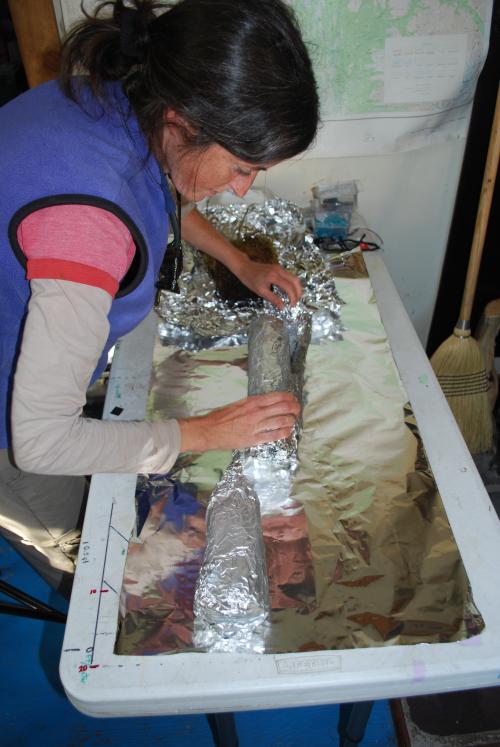
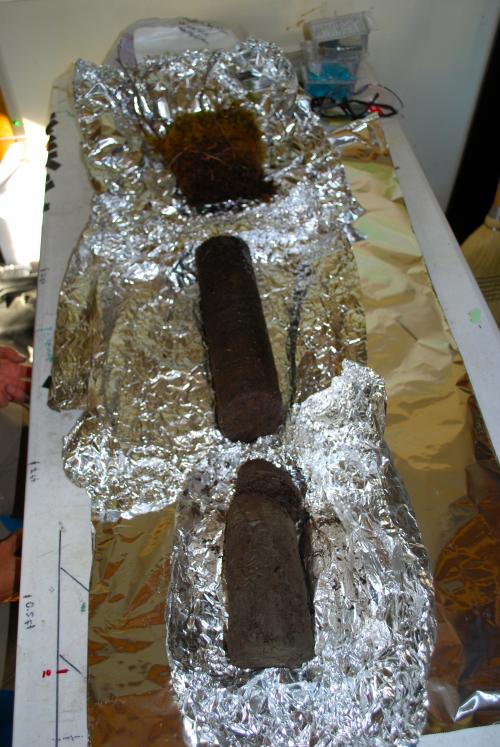
The cores we took today were pretty interesting. We first carefully removed the living material from the top of the ground down to the soil and then began to drill. The cutting goes pretty fast until you get to the bottom of your core tube or you hit a rock! This drill does not go through rock. So we either stop or dig the rock out with our hands and try again.
Once we have hit bottom, or as far as we can get, we pull the core tube up with the core sample inside. We take the sample out of the tube and we can look at a cross section of the ground that dates back thousands of years. The sample we are looking at today has a thick layer of living and dead moss and other plants. This layer is about 20 cm thick and represents at least 25 years of growth.
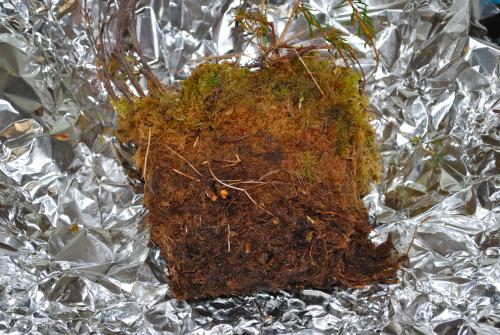
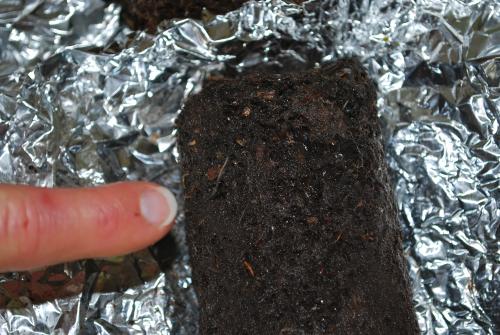
Underneath that layer we have a dark organic layer of once living material that has been in the ground for a long time. The bottom of this layer is thousands of years old. At one time this was the surface of this area with living things there. We found an ice lens at the bottom of the organic layer, which was very interesting. Under the ice lens began the mineral layer. This is where the inorganic sediments and minerals formed the ground possibly after the glacial event in this area.
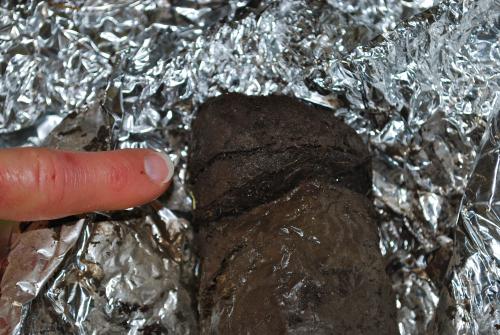
These samples are kept frozen and returned to the labs at the universities. Many tests can be made with these including moisture content, amount of carbon, amount of living material and the amounts of minerals in the soil. You can tell alot about an area now and learn things about the area from long ago. It's like reading a book about the history of this part of the earth. You just have to know how to read it, and that takes time!


Comments